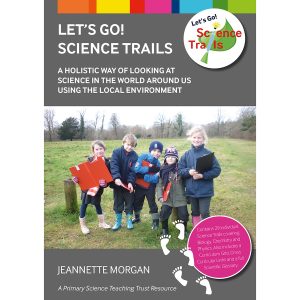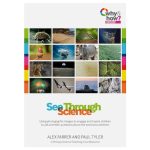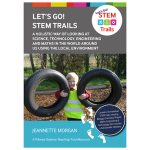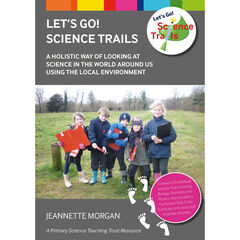“Must we always teach our children with books? Let them look up at the mountains and the stars up above. Let them look at the beauty of the waters and the trees and flowers on earth. They will then begin to think, and to think is the beginning of a real education.”
David Pollis (2007)
How do the trails work?
There are 29 trails in total – split into 3 scientific areas – Biology, Physics and Chemistry. Suggested age ranges are given, but they can be easily adapted to suit other ages.
Each trail is set out simply and clearly under the following headings:
Introduction
Themes and Concepts Explored
Scientific Skills
Location
Resources and Preparation
On the Trail
Key Questions
Back in the Classroom
Here are a few, very brief, examples of activities from trails covering each of the 3 scientific areas:
Plant Diversity (Age 4-7) Where? Your school garden, a park, a florist or garden centre. Overview Children take on the role of ‘plant detective’, identifying, tallying, describing, taking digital pictures. Healthy Eating (Age 7-11) Where? A high street or town centre with a mixture of food stores. Overview Children look at menus from two different restaurants, identify the food groups, whether the meals are balanced, and which would be the healthiest options. They also investigate whether there is a link between the cost of food and how healthy it is, then list food outlets and spot any themes. Biology
Chemistry
Everyday Materials (Age 4-11)
Where? Playground, school grounds, high street, park
Overview Children visit two locations, looking at where different examples of materials (e.g., wood, stone, glass, plastic) can be found.
Water in Our World (Age 4-11)
Where? School grounds, a pond, river, canal or stream
Overview Children observe clouds and predict where water will gather after rain.
They observe rain showers, using all their senses, measure rainfall and evaporation.
Physics
Sound Detectives (Age 7-11)
Where? Busy street, quiet street, park, shopping centre
Overview Children identify and describe sounds at different volumes and pitches, creating sound maps from the chosen location. They use data loggers for measurement.
Forces in the Park (Age 7-9)
Where? A local playpark or school playground with play equipment.
Overview This trail is an exciting way of experiencing and understanding forces.
Children try out each piece of equipment and record the force/s they use.
The book also includes:
A photocopiable Health and Safety Checklist
Cross-curricular links
An extensive glossary of scientific terms
Look out for blogs highlighting the following PSTT resources:
The Primary Science Teaching Trust (PSTT) have a vision to see excellent teaching of science in every classroom in the UK
There is much to explore on their web site, Primary Science Teaching Trust – PSTT including many free digital downloads, videos, and excellent support for subject leaders.









